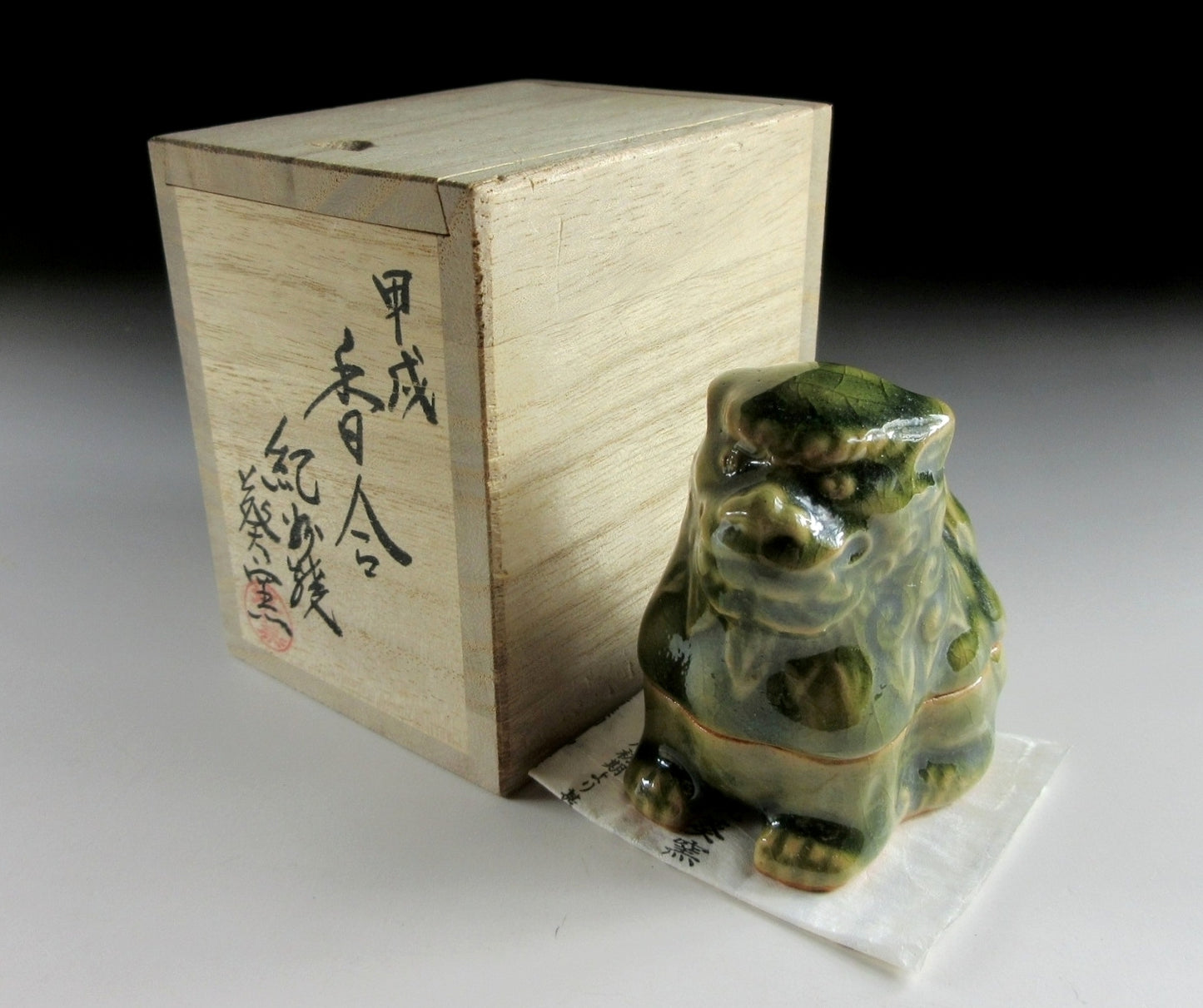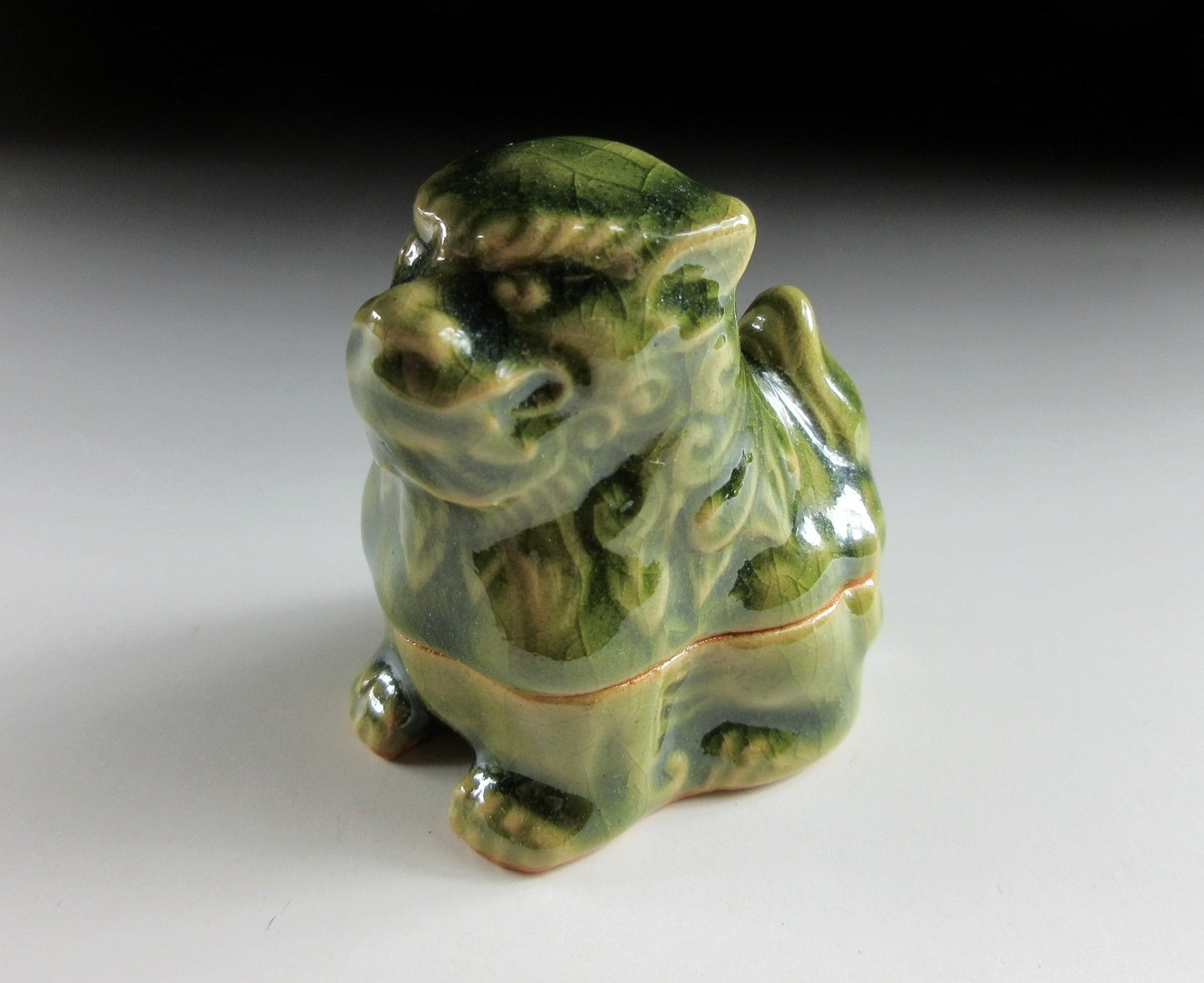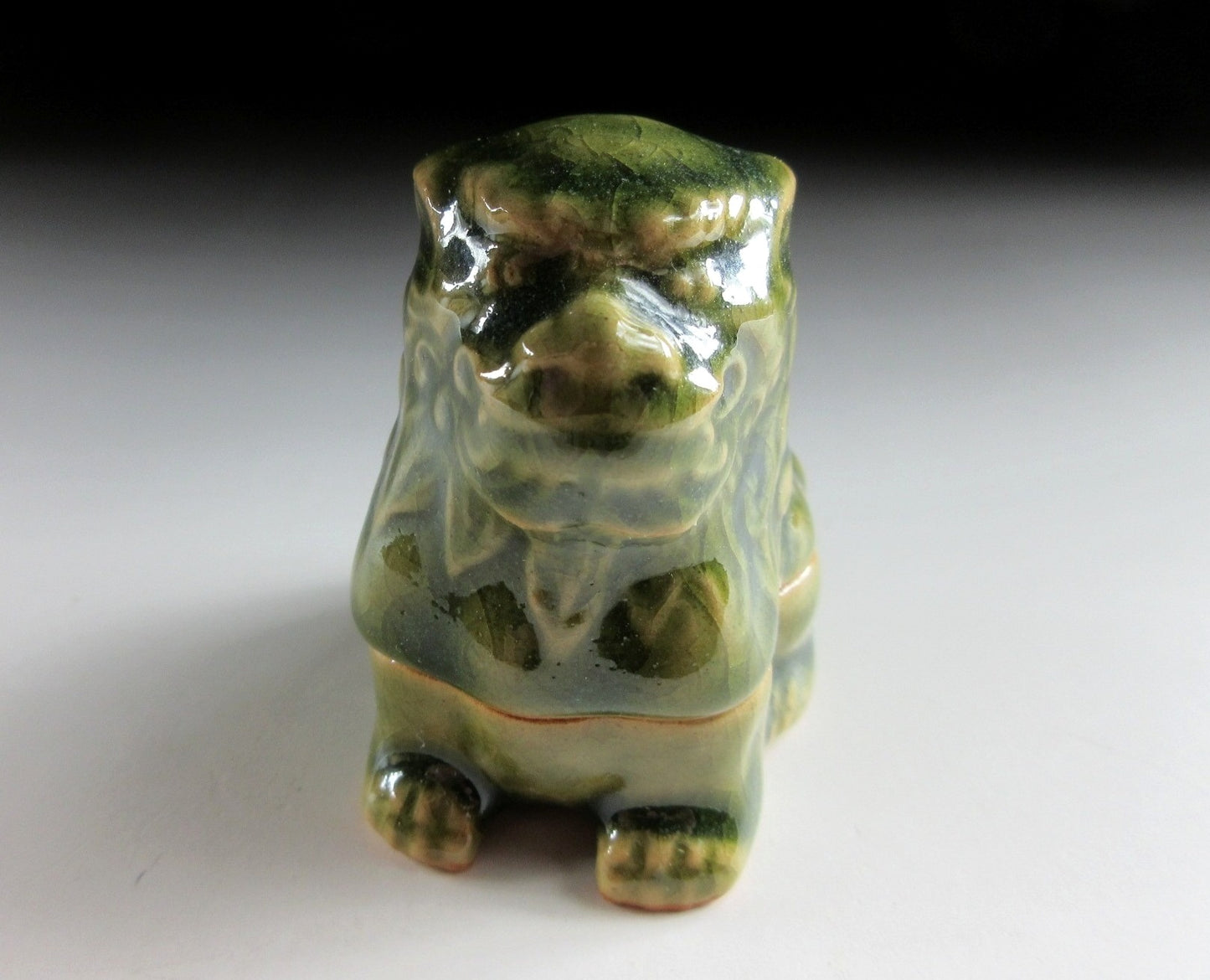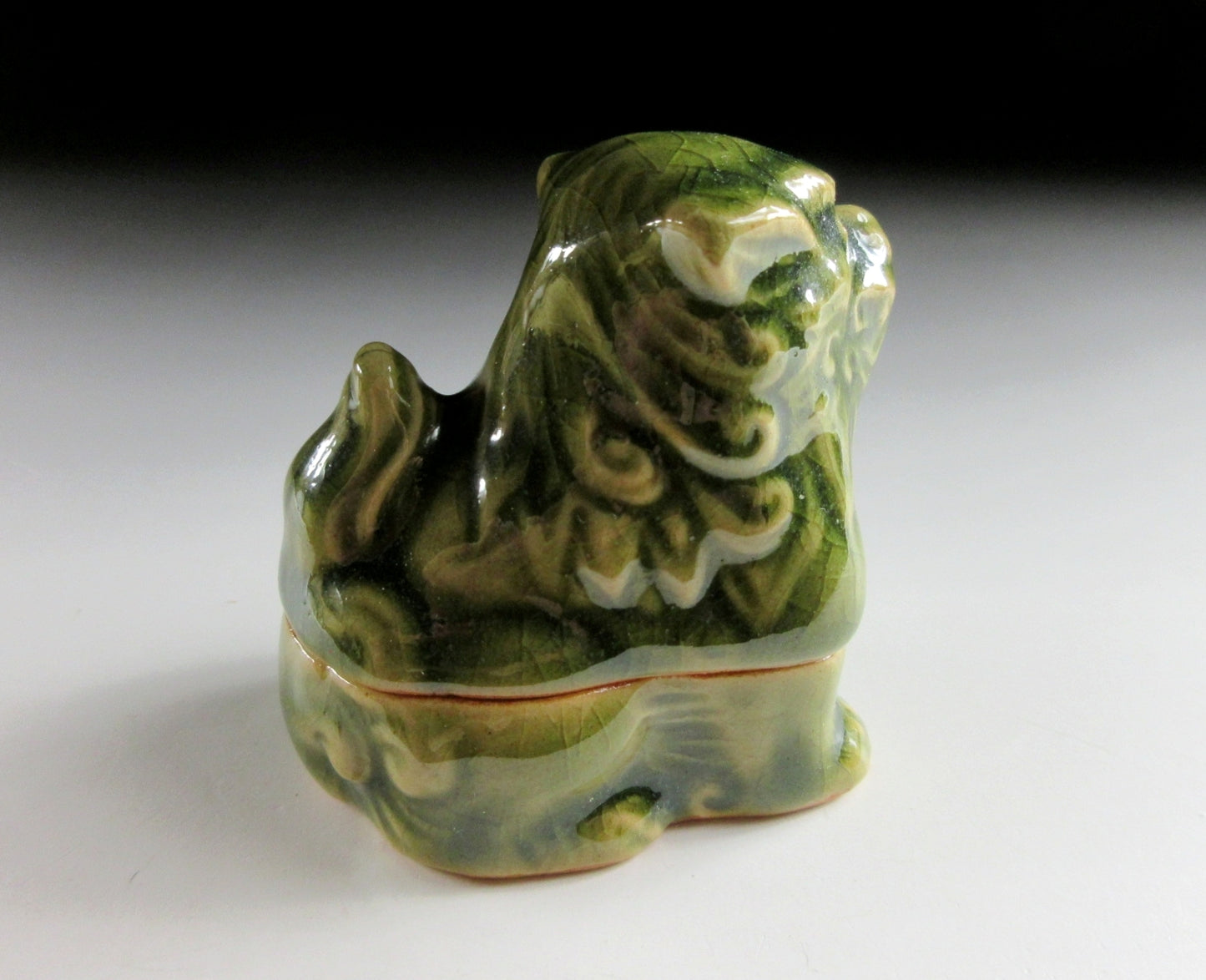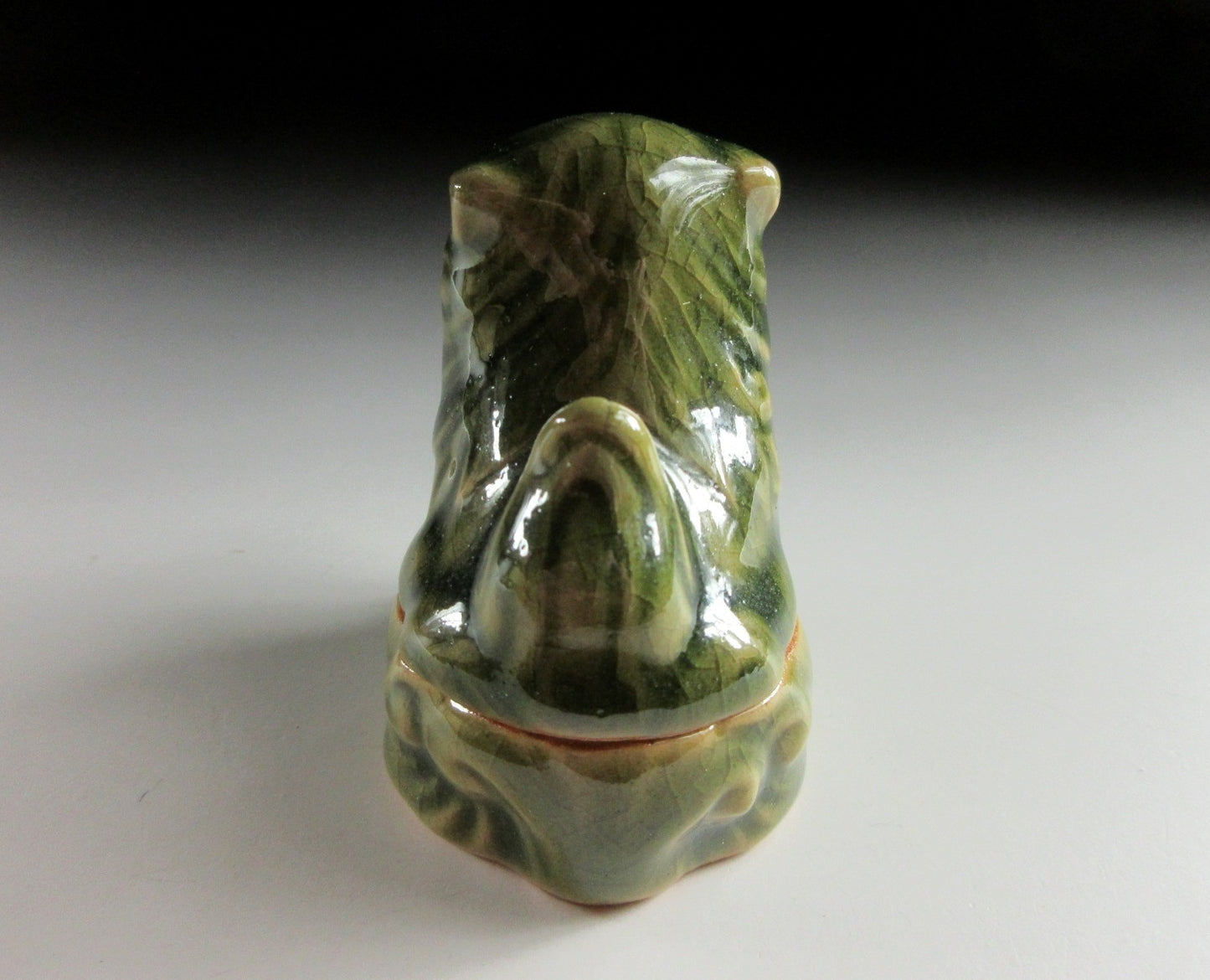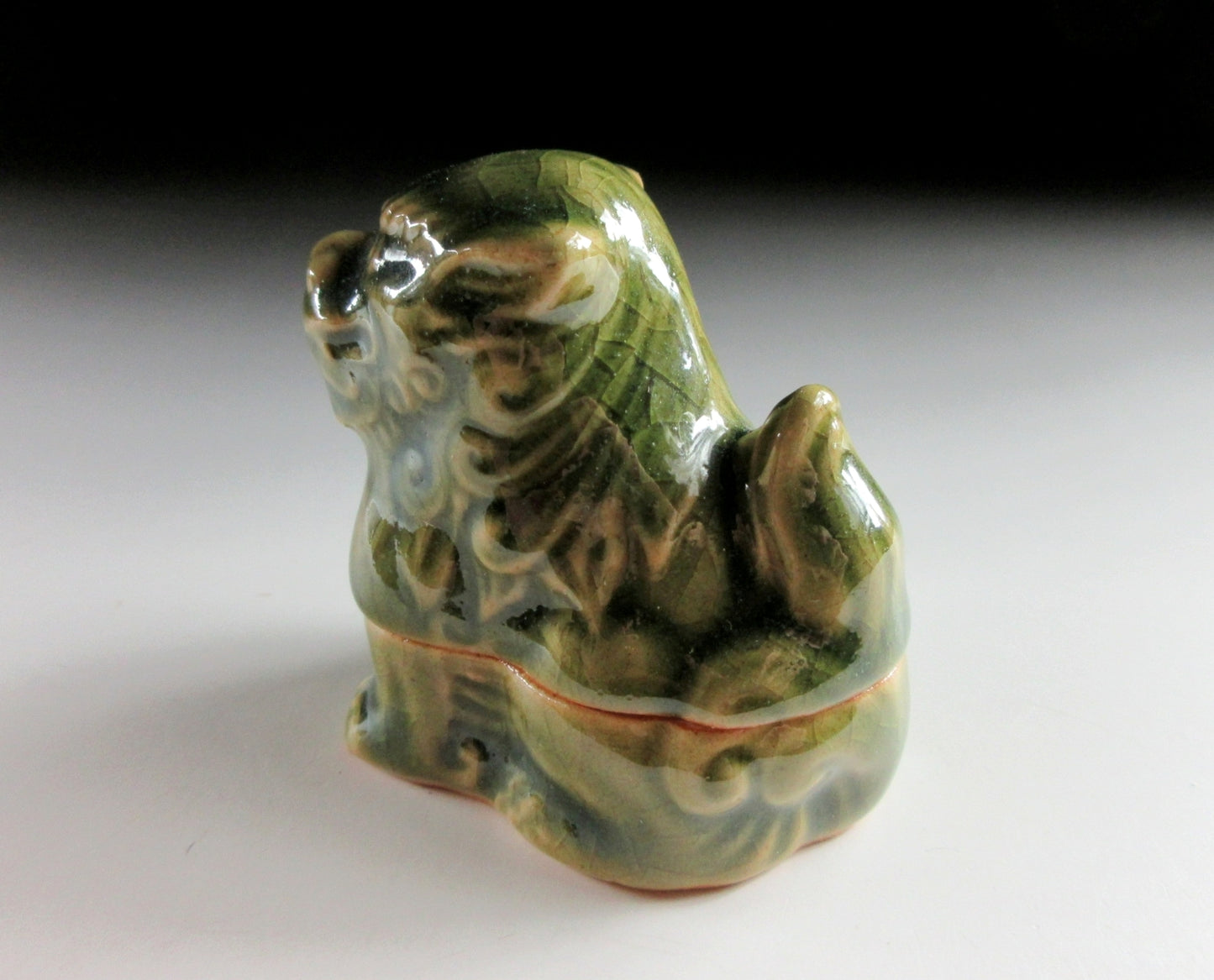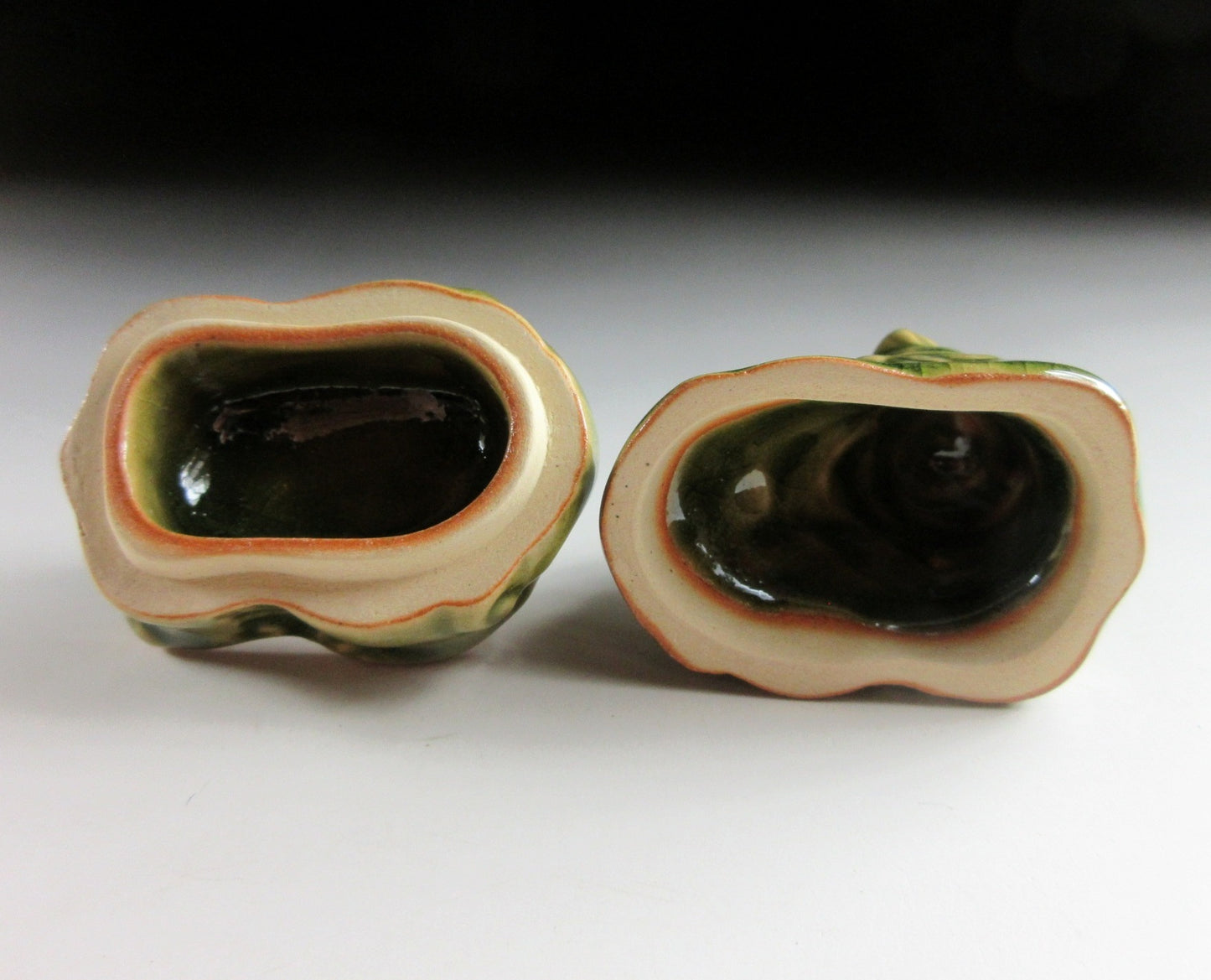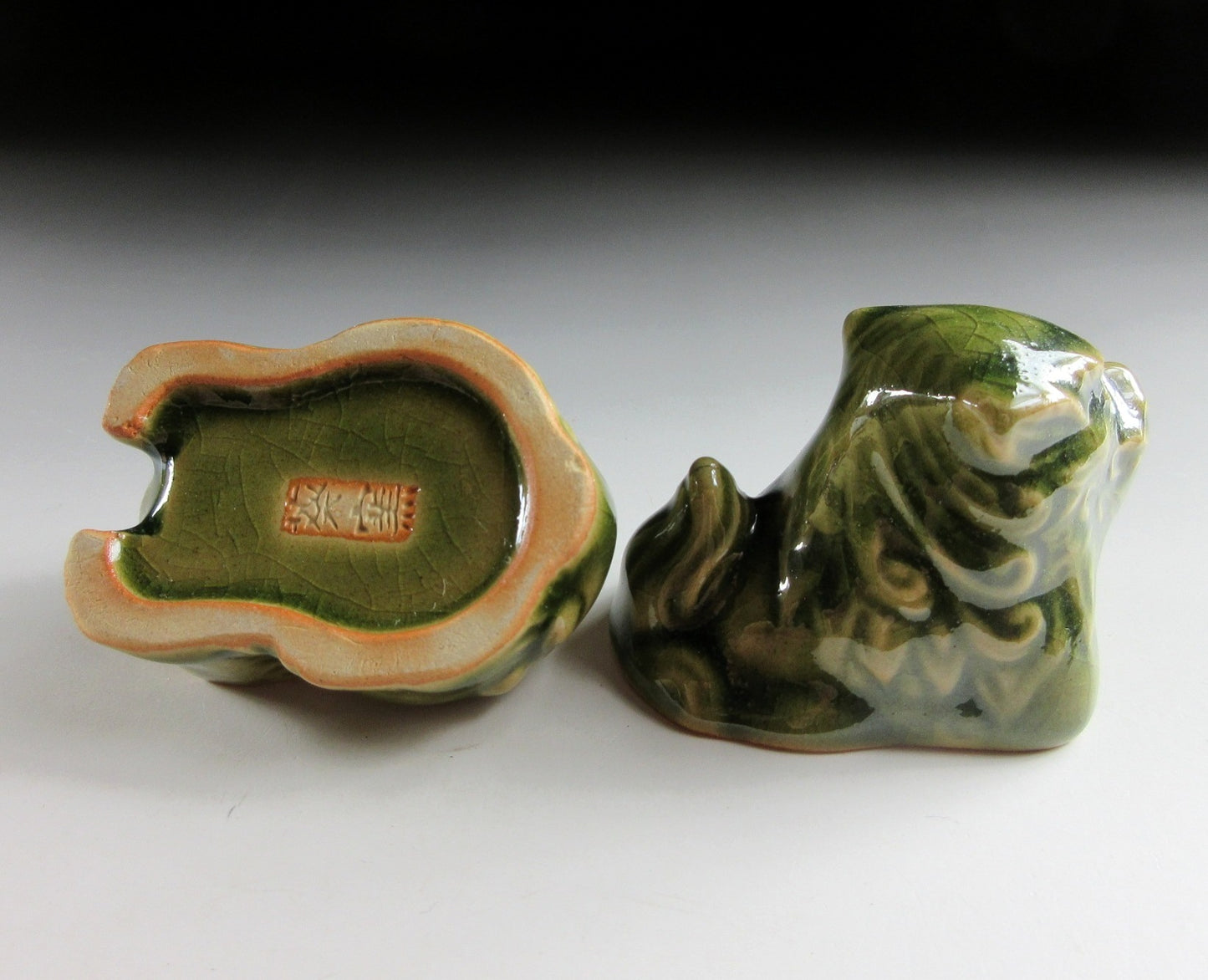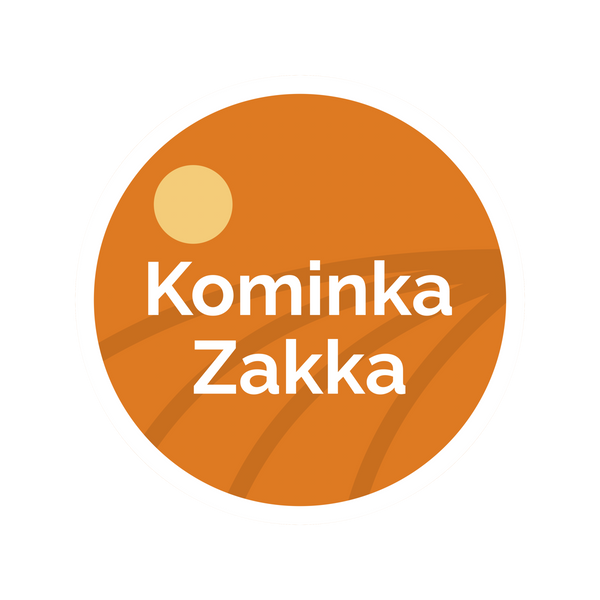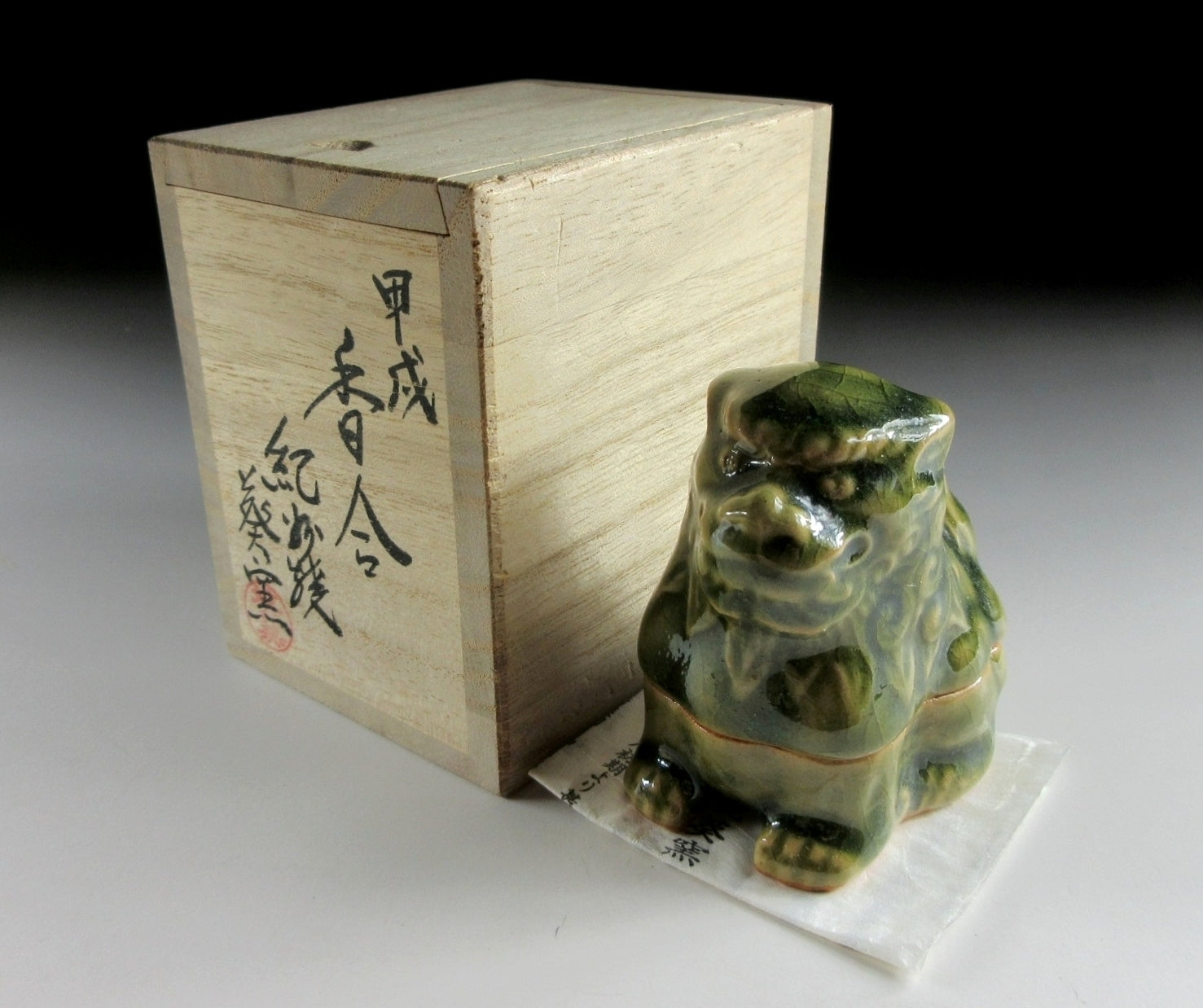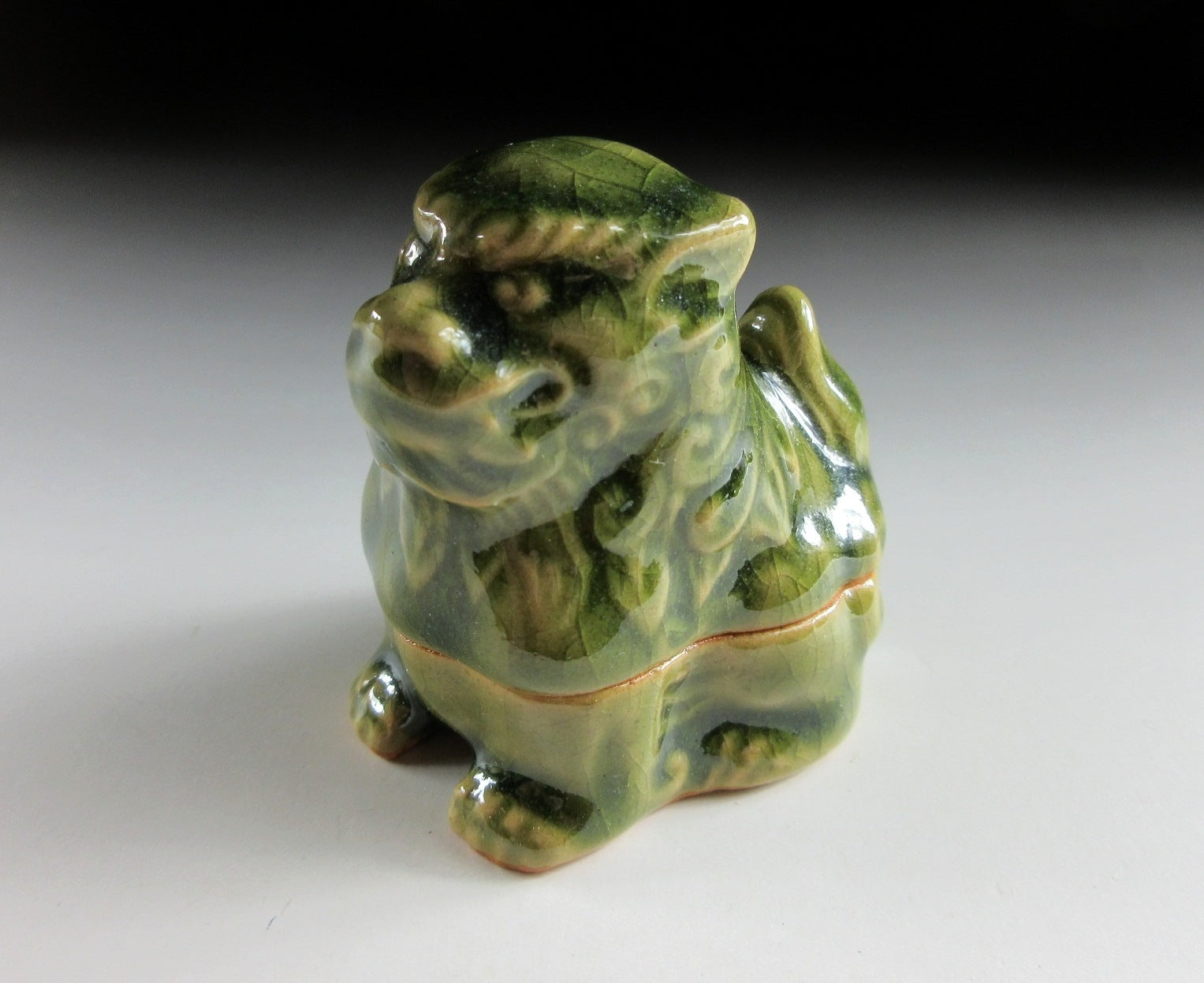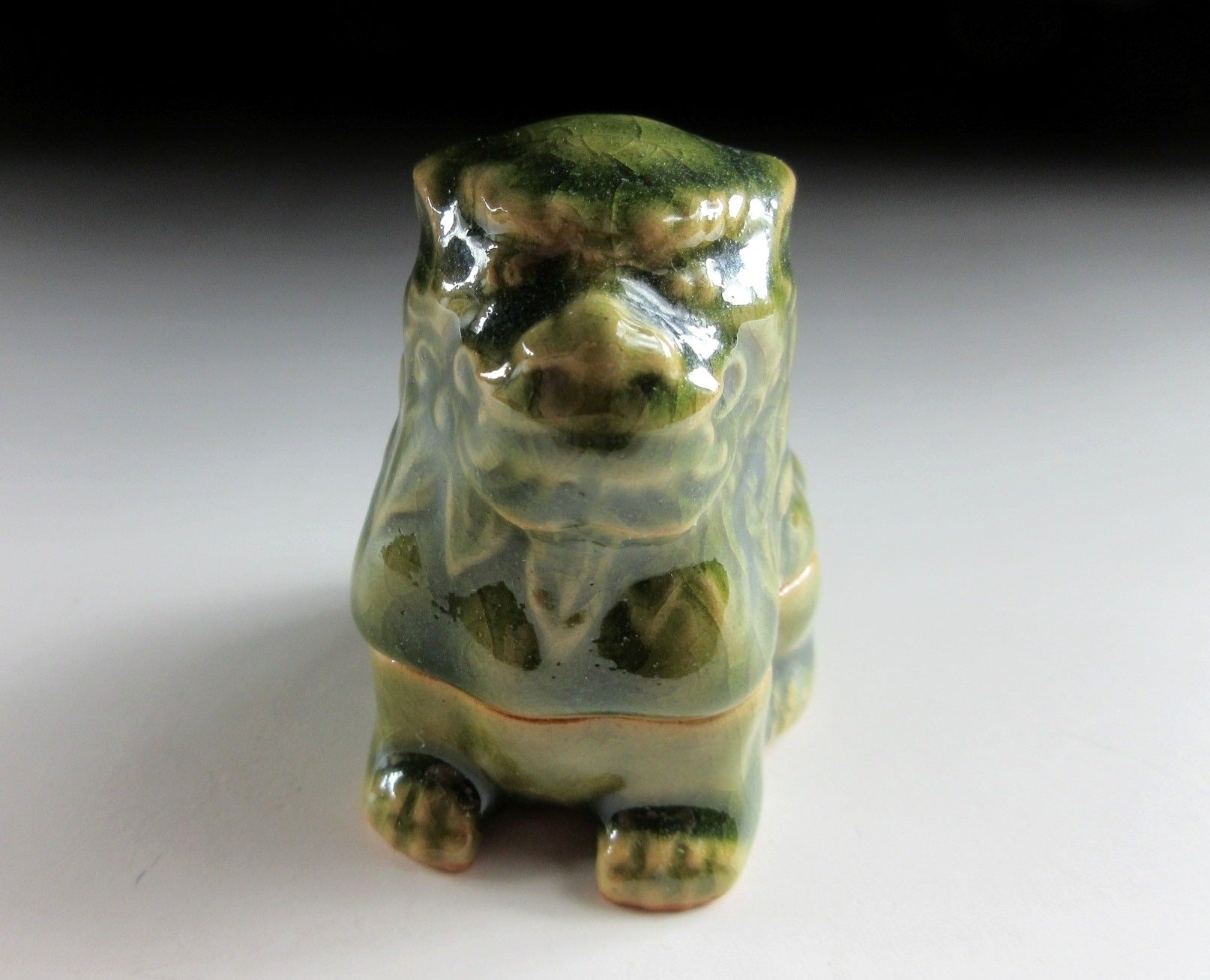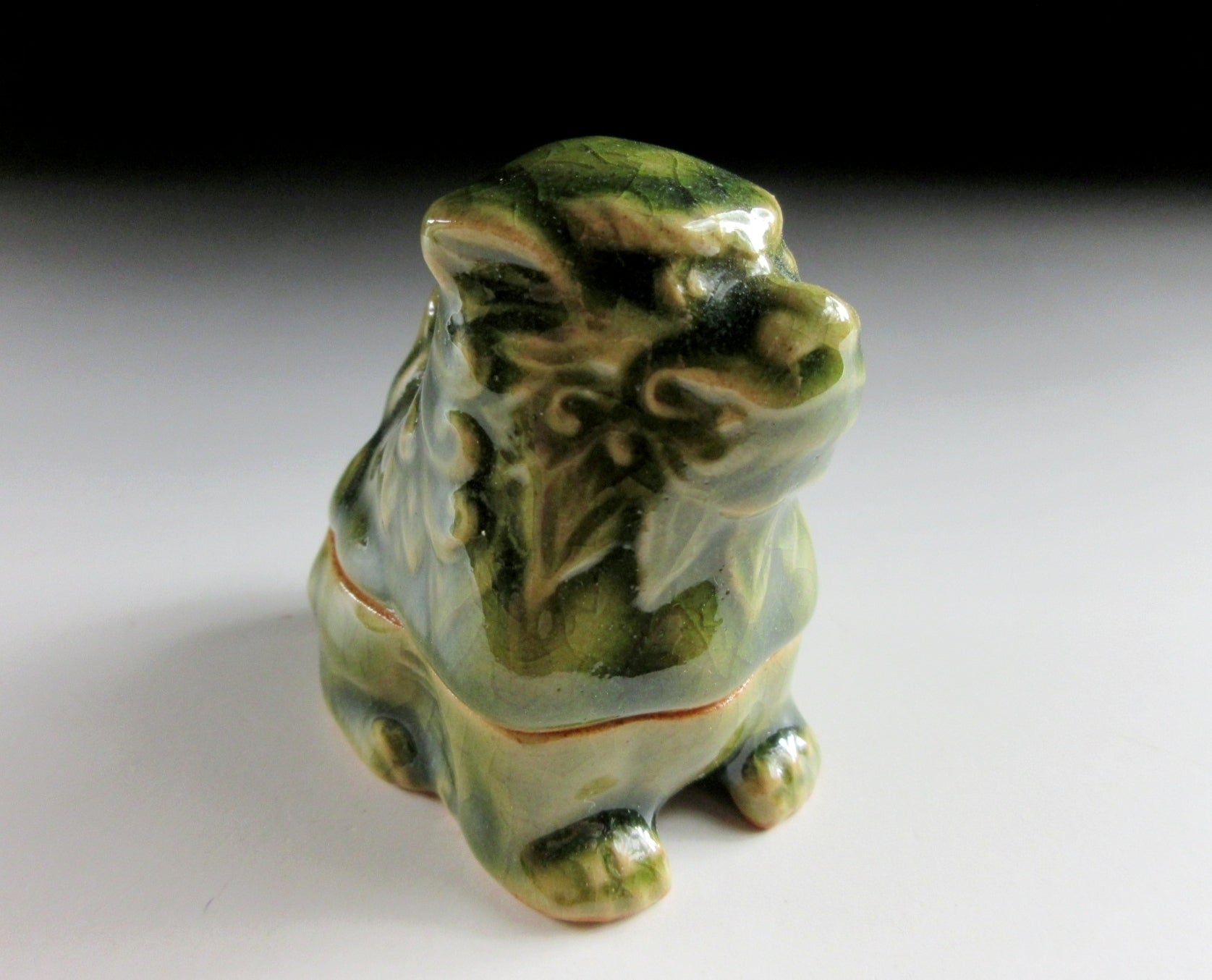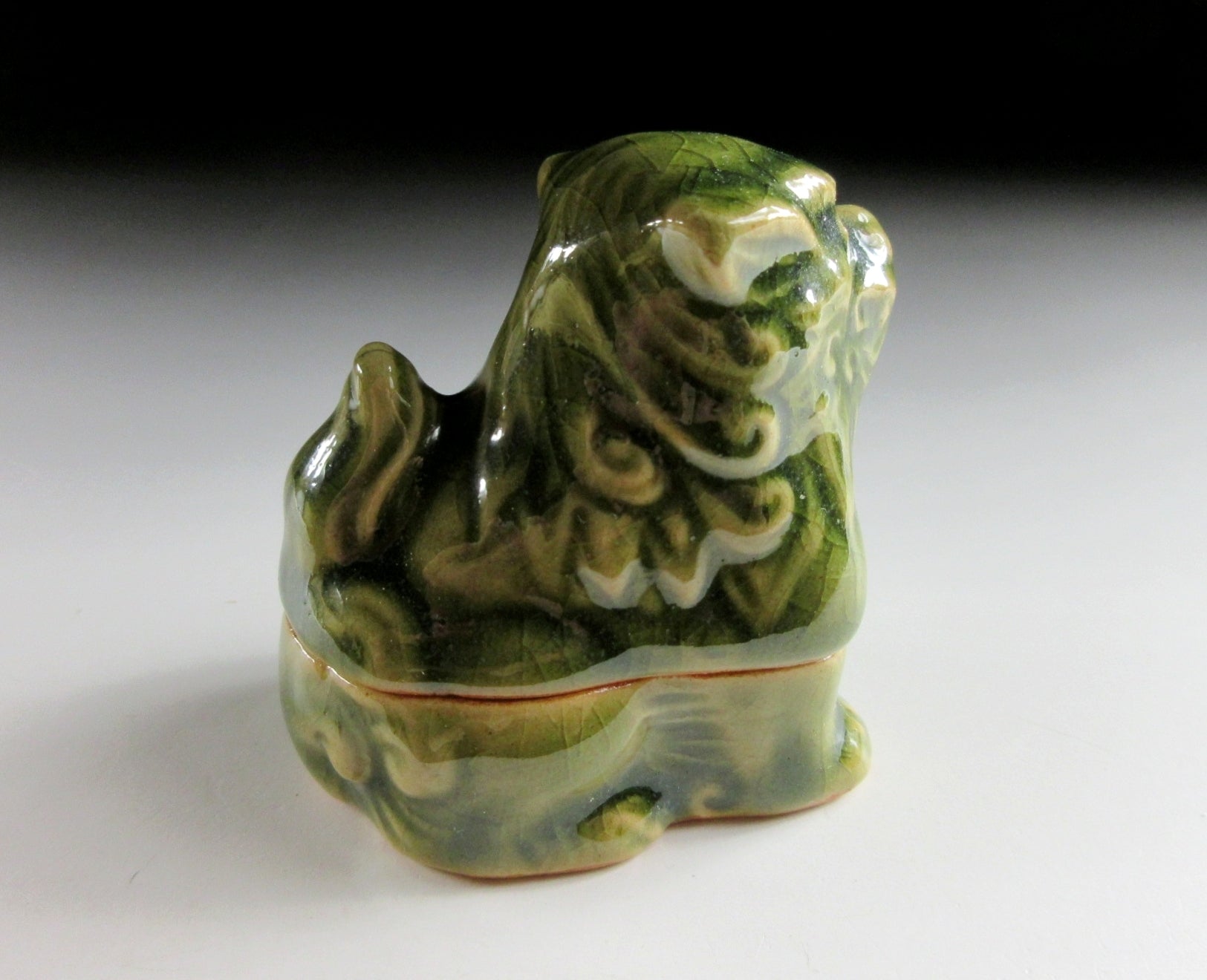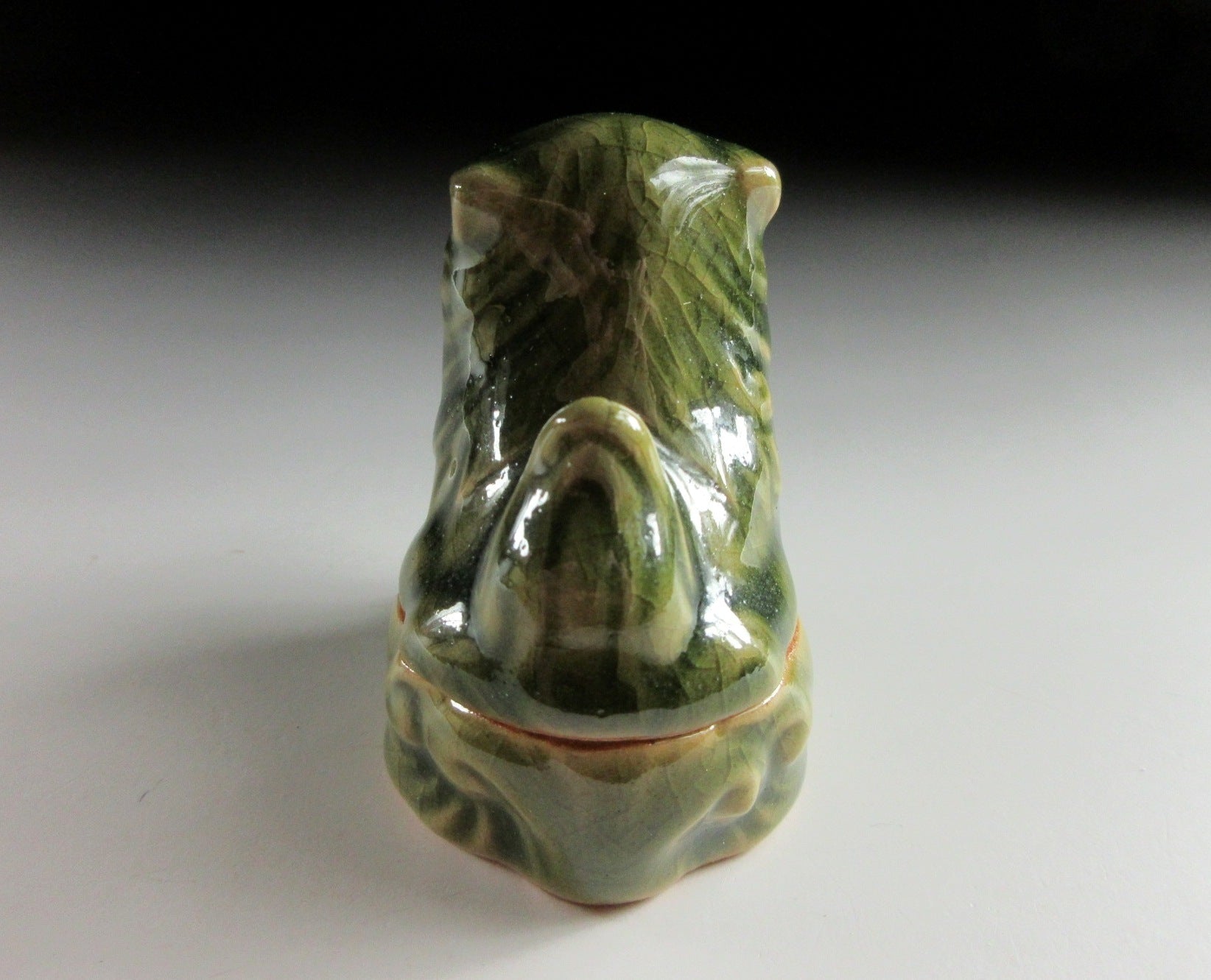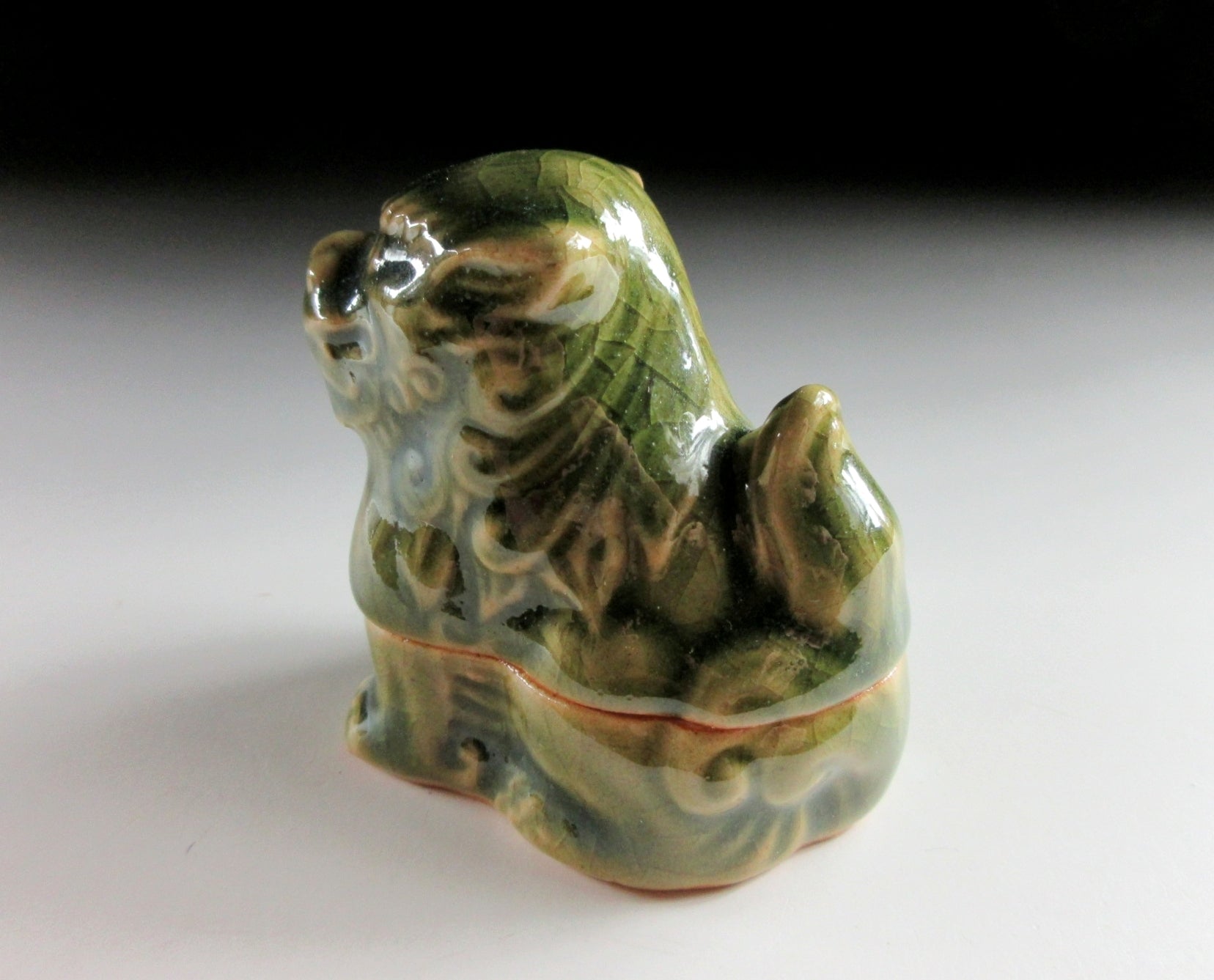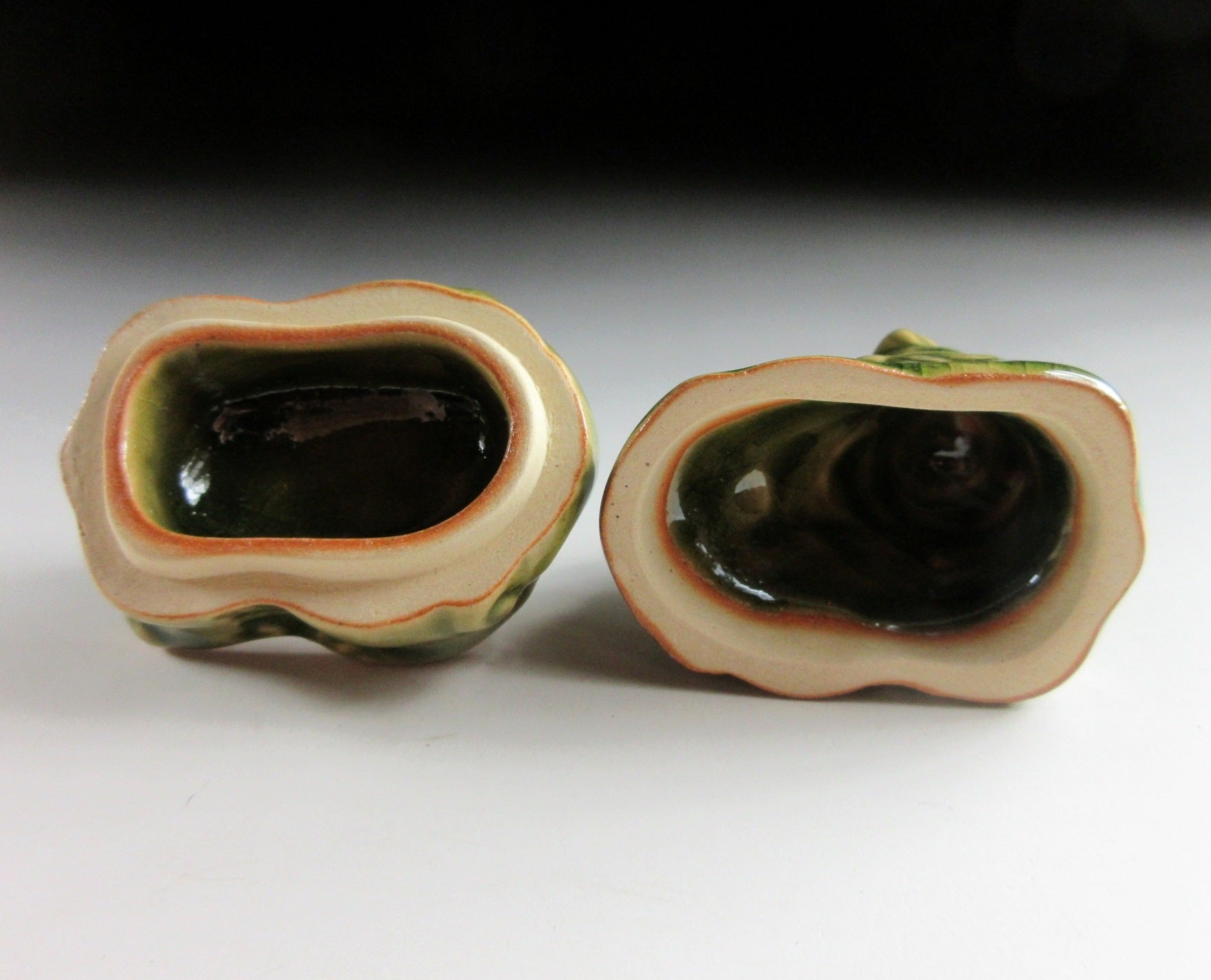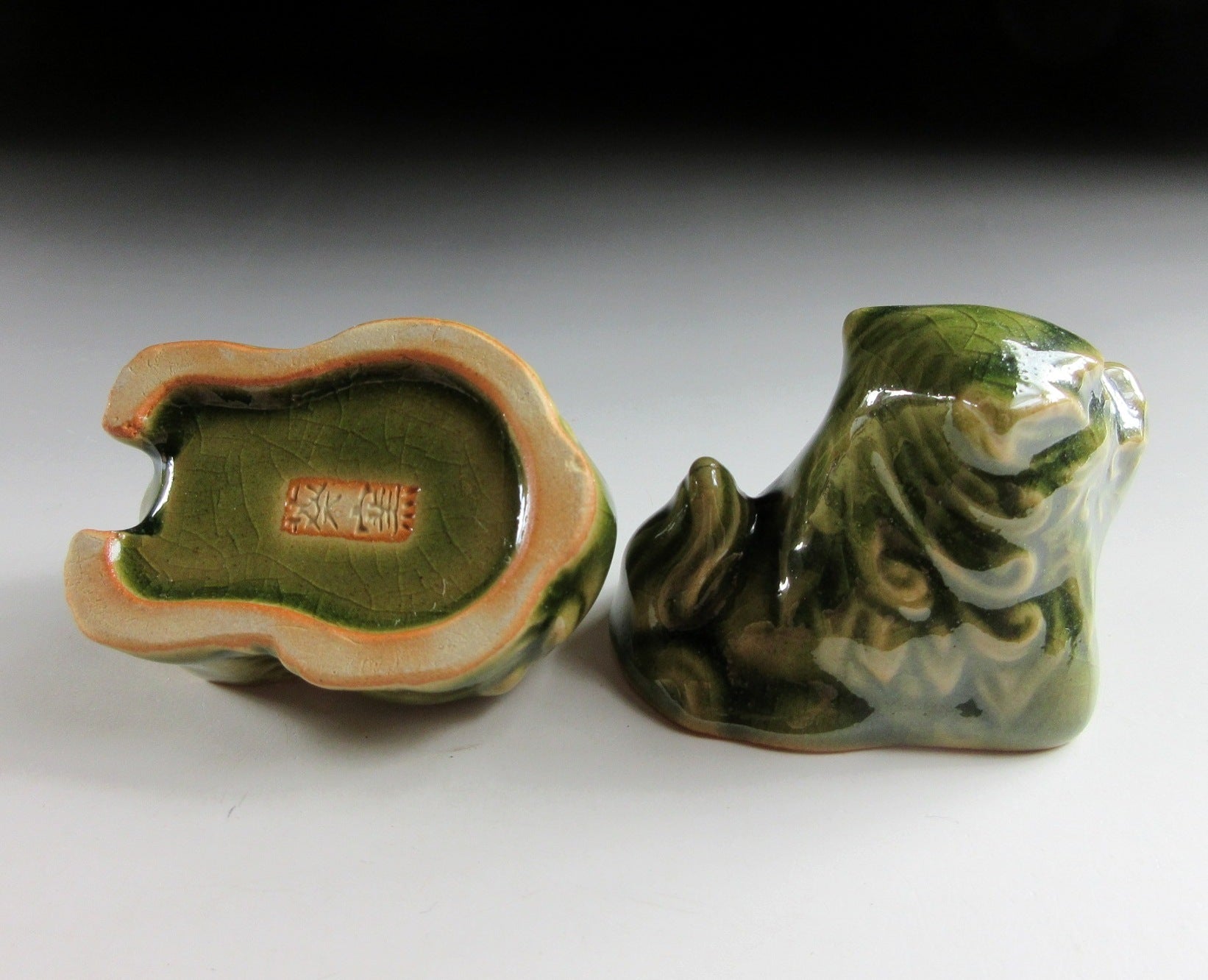Kominka Zakka
Aoi Gama Kishu-ware Shisa Kogo
Aoi Gama Kishu-ware Shisa Kogo
Couldn't load pickup availability
*SHIPPING OPTIONS VARY DEPENDING ON THE DESTINATION, PLEASE SCROLL TO THE END OF THIS LISTING FOR MORE DETAILS.
This listing is for a Kishu-ware kogo made around 20 years ago by Aoi Gama. It is made of stoneware slip and moulded to resemble a shisa. Shisa are believed to protect from homes from various types of evils. When in pairs, the left shisa traditionally has a closed mouth, the right one an open mouth. The open mouth wards off evil spirits, and the closed mouth keeps good spirits in. Its size and shape is suitable for holding both woodchip and kneaded incense, though pottery kogo are typically used for kneaded incense during the cooler months. The stamp of the kiln can be found on the bottom, and it comes with its original signed wooden storage box. It also comes with a Japanese language profile paper.
Aoi Gama was established in 1932 by Samukawa Seiho I. Samukawa studied under Kyo-ware potter Sawada Sozan, and spent five years in Aichi Prefecture as chief manager of the Aichi Prefectural Institute of Ceramic Industry. After returning to Wakayama he established a kiln and workshop at Koyaguchi-Odawara. Tokugawa Yorisada, the former lord of the Kishu Domain, was looking for a potter to revive Kishu-ware. He approached Samukawa and asked him to produce Kishu pieces using traditional glazes and techniques. His kiln was then renamed Aoi Gama, aoi (hollyhock) being the crest of the Tokugawa clan. In 1956 Samukawa developed the now famous Nachiguro-Yu glaze technique, a black coloured glaze made from black Nachiguro stones. The kiln was later moved to Nanki Shirahama in 1967, three years later Samukawa was designated as a Person of Cultural Merit by the Japanese Agency for Cultural Affairs. Before his death in 1975 he received the highly coveted Order of the Sacred Treasure, Gold and Silver Rays. Aoi Gama is now in its second generation and run by Samukawa’s eldest son, Samukawa Seiho II. **Fellow sellers, this information was researched by Kominka Zakka and CANNOT be used in your own listings.
Kishu-ware refers to pottery that was first produced during the Edo period in modern day Wakayama Prefecture, however many kilns were forced to close down after the abolition of the Kishu Domain. The very last of its kind closed in 1878. In 1937 a potter named Samukawa Seiho was tasked with reviving the traditional Kishu style of pottery, so he set up Aoi Kiln. The kiln was later moved to Nanki Shirahama in 1967, and this led to the development of the now famous Nachiguro-Yu glaze technique. Nachiguro-Yu is a black coloured glaze made from black Nachiguro stones. Aoi Gama is now headed by the second generation, Samukawa Seiho II. **Fellow sellers, this information was researched by Koedo and CANNOT be used in your own listings.
Kogo are for holding incense during the tea ceremony. Kogo vary depending on the season. In summer wooden kogo are used for holding chips of incense wood, and in winter ceramic kogo are used for holding kneaded incense intended for the hearth. During the tea ceremony, incense is added to the charcoal fire during the charcoal-laying procedure.
Sizes
Box: H.9cm (3.5”) x 8.6cm (3.3”) x 6.9cm (2.7”)
Kogo: H.6cm (2.3”) x 6cm (2.3”) from back to front x 4cm (1.5”) across
Condition
It’s in very good condition with no chips or cracks.
THESE ARE SHIPPING ESTIMATES BASED ON THE CURRENT GLOBAL SITUATION
**Germany, France, Greece, Spain, Poland, Austria, Slovakia, Lithuania, Slovenia: NO SHIPPING. Very strict and expensive packaging laws in place and we are not licensed to send products to these countries. We have no plan to register at this time because the process is in some cases very expensive and complicated, plus each country has its own set of regulations and application process.
**USA, UK, Canada, Australia, New Zealand, Switzerland, Norway: Airmail ePacket (approx. 15-28 days). Combined shipping available up to 2kgs for Airmail ePacket (please send us a message).
**Asia: Airmail ePacket (approx. 15-21 days). Combined shipping available up to 2kgs for Airmail ePacket (please send us a message).
**Central Asia, Middle East, South Africa, Brazil, Mexico: EMS Express 10-15 days.
**Russia: No shipping methods available.
Share
